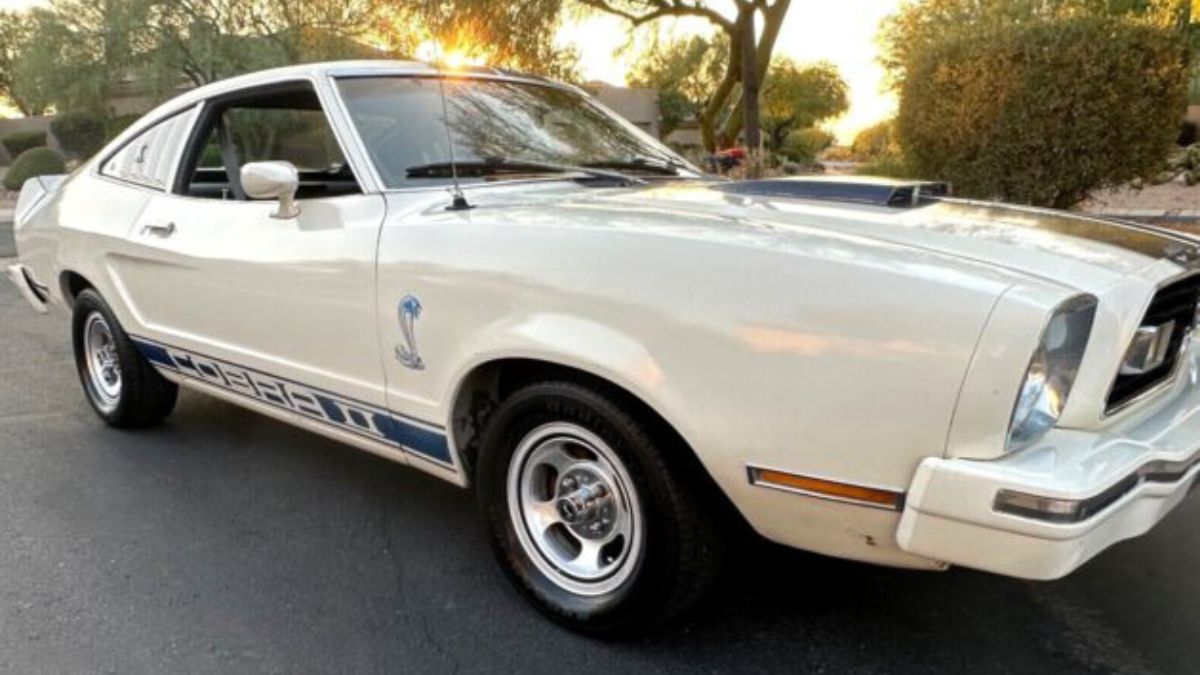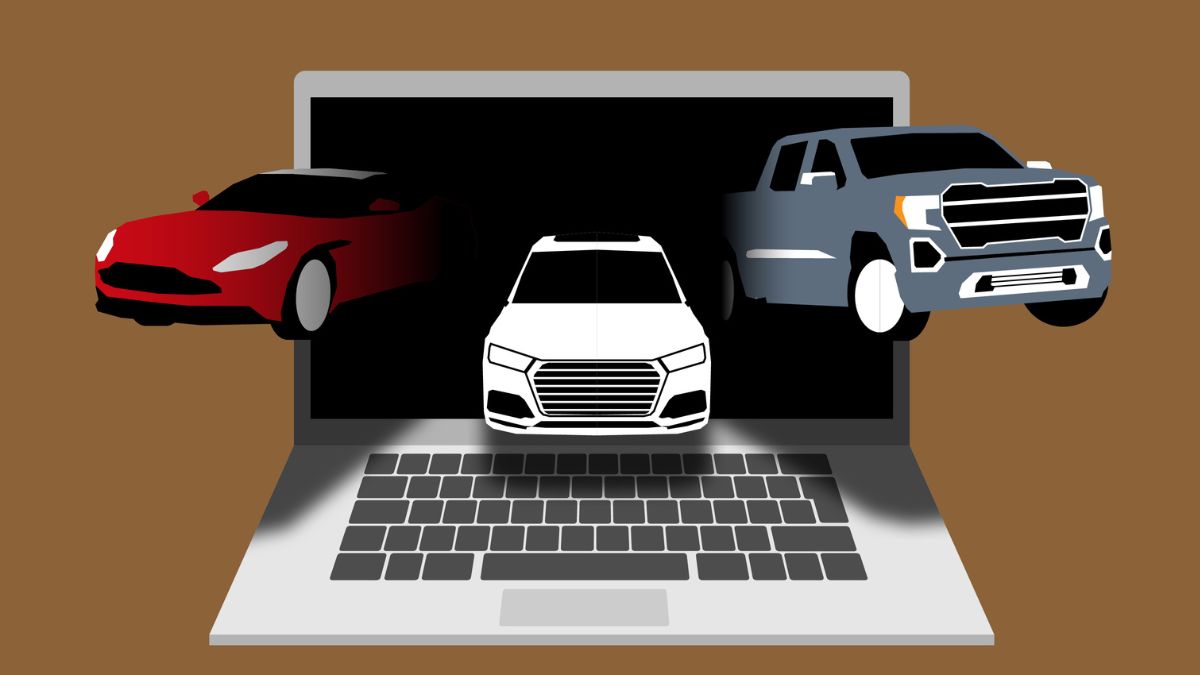AUTOMOTIVE
The Ford Mustang Stablemate Capri: A Forgotten Contender in the Pony Car Era

The Ford Mustang is a household name—an iconic pony car that has dominated roads and racetracks alike since its introduction in 1964. But have you heard of its lesser-known stablemate, the Capri? While the Capri never achieved the Mustang’s legendary status, it carved its own niche in automotive history. This blog dives into the fascinating story of the Ford Mustang Stablemate Capri, exploring its origins, unique features, and the impact it made in the automotive world.
Whether you’re a longtime gearhead or just starting to explore America’s automotive heritage, this post will shed light on one of Ford’s overlooked yet significant models.
Origins of the Ford Mustang Stablemate Capri
European Roots
Unlike the Mustang, which was born and bred in America, the Capri originated in Europe. Designed by Ford of Europe, the Capri was launched in 1968 as Ford’s answer to the growing demand for compact sports cars. It was a sleek and stylish coupe aimed at being “the car you always promised yourself,” a tagline that resonated with buyers looking for affordability and performance.
The Capri was positioned to compete with European rivals like the Opel Manta and Alfa Romeo GTV, and Ford’s team had high hopes that it would be a hit in markets across the pond. Its design borrowed cues from the Mustang but emphasized European sensibilities, such as smaller engines and a sharper focus on handling curves rather than straight-line speed.
The Capri Meets the Mustang
Ford, eager to expand the Capri’s reach, shipped the model to the U.S. market in 1970, where it was marketed as the Mercury Capri. Though branded under Mercury, the Capri quickly became associated with the Mustang due to its sporty design and performance characteristics, earning it the unofficial title of the Mustang’s stablemate.
Key Features of the Ford Capri
Design
The Capri’s design was undeniably one of its most attractive qualities. Its long hood and short deck proportions aligned with the classic pony car formula established by the Mustang, but it featured a more compact and aerodynamic silhouette that appealed to European and urban American buyers alike.
Its stylish front grille, slanted headlights, and optional vinyl roof gave the Capri a sophisticated flair. The car’s lightweight body ensured nimble handling, which became a standout feature compared to heavier American muscle cars.
Performance
While the Mustang boasted high-performance V8 engines, the Capri offered an array of smaller, more efficient options. Entry-level models featured inline-4 engines, but performance-seekers could opt for the lively V6 powertrains.
The 2.6L Cologne V6, later updated to a 2.8L, was a favorite among enthusiasts, offering a balanced mix of power and efficiency. While it couldn’t match the Mustang in terms of raw horsepower, the Capri made up for it with its precise handling and lighter weight—qualities that gained it a loyal following.
Affordable Pricing
Another standout feature of the Capri was its affordability. Ford pitched the Capri as a budget-friendly sports car, making it accessible to younger buyers who couldn’t afford the larger and more expensive Mustang. This strategic pricing made the Capri a popular choice for first-time sports car owners and college students.
Capri’s Impact on the Market
The Capri enjoyed initial success in the American market, with Mercury dealers reporting strong sales figures in the car’s early years. It was marketed as “the sexy European,” emphasizing its exotic appeal compared to standard domestic offerings.
The car also had a strong showing in motorsports, adding credibility to its reputation. Racing enthusiasts recognized the Capri’s potential on the track, further cementing its status as a serious sports car contender.
Challenges Against the Mustang
Despite its initial success, the Capri struggled to sustain momentum, especially as the Mustang evolved to address growing competition. When the Mustang downsized into the Mustang II during the mid-1970s, it encroached directly on the Capri’s territory. Both cars competed for the same audience, leading to internal contention within Ford.
Additionally, the Capri’s smaller engines and European styling didn’t always resonate with die-hard American muscle car fans who preferred the raw power and classic looks of the Mustang.
Capri’s Evolution and Legacy
Over the years, the Capri underwent several design evolutions, with notable changes in the late 1970s and 1980s. The model eventually became integrated into the Fox platform, sharing DNA with the Mustang in a more literal sense. Despite Ford’s efforts to modernize and expand the Capri’s appeal, it never quite achieved the widespread acclaim of its stablemate.
That said, the Capri remains a beloved classic among enthusiasts. Its European aesthetics, budget-friendly performance, and unique position as the Mustang’s stablemate have earned it a cult following.
Collectors’ Interest
Today, the Capri is a sought-after collector’s item, especially earlier European-built models and performance-oriented trims like the Capri RS. Retro car enthusiasts appreciate the Capri for its distinct blend of European refinement and American swagger—a fitting description for its role as the Mustang’s lesser-known sibling.
Why the Capri Deserves Recognition
While the Ford Mustang Stablemate Capri will undoubtedly continue to dominate pony car conversations, the Capri deserves recognition for its unique contributions. It proved that sports cars could be stylish, affordable, and practical, bridging the gap between European and American motoring ideals.
For many, the Capri was an entry point into the world of performance cars, enabling young drivers to experience the thrill of a sporty coupe without the hefty price tag. Its legacy as a versatile, accessible sports car endures in the hearts of its fans.
The Road Ahead for Enthusiasts
Rediscovering the Ford Capri offers an opportunity to reflect on the rich, diverse history of pony cars and the models that contributed to their evolution. Whether you’re a die-hard Mustang fan or just learning about Ford’s automotive heritage, the Capri represents a fascinating chapter that’s worth exploring further.
If you’re lucky enough to spot a Capri at a classic car show—or perhaps restore one yourself—take a moment to appreciate the forgotten contender that once stood proudly alongside the Mustang.
AUTOMOTIVE
What Makes a Car “Legendary” on AutoFame?

What Makes a Car Legendary?
Some cars don’t just age well—they become icons. But what makes a car legendary in the eyes of the community? It’s not just about horsepower or design. A legendary car tells a story, stirs emotion, and earns admiration across generations.
On AutoFame, these vehicles aren’t forgotten relics—they’re celebrated legends. Here, collectors recognize excellence through passion, performance, and provenance.
Defining Legendary Cars on AutoFame
Within the AutoFame community, a legendary car is one that checks more than a technical box. These vehicles leave a lasting impression. They spark conversations, inspire restorations, and set standards for beauty, performance, or cultural value.
Some defining features of legendary cars include:
- Historical importance (first of its kind, celebrity-owned, or rare model)
- Timeless design that still turns heads
- Performance benchmarks that stood out in their era
- Stories that connect with collectors on a personal level
Legendary cars aren’t always exotic or expensive—they’re unforgettable. Often, it’s their journey that secures their status.
Inside the AutoFame Car Hall of Fame
AutoFame highlights standout profiles through its car hall of fame, where exceptional vehicles are showcased for their story and impact. Whether it’s a barn find turned beauty or a well-preserved original, these cars are celebrated for what they represent.
This feature allows users to:
- Nominate entries for legend status
- Engage with top community picks
- Explore historic timelines through rich storytelling
AutoFame’s platform helps collectors archive, connect, and elevate cars that truly deserve recognition.
Iconic Classic Cars That Define the Term “Legendary”
Some models continually rise to the top when it comes to admiration. These iconic classic cars are fan favorites for a reason.
Examples include:
- The 1967 Shelby GT500: A muscle icon with racing roots
- The Porsche 356: Graceful, light, and historically significant
- The Jaguar E-Type: Widely considered one of the most beautiful cars ever made
Each of these vehicles represents a different kind of legend, but all have one thing in common: they’ve inspired thousands across the AutoFame network.
How Collector Stories Add Legendary Status
Beyond the badge and build, what elevates a car’s status is the collector’s story. When users share emotional experiences or detailed rebuilds, they breathe life into metal.
These narratives help define collector favorites on AutoFame, turning impressive cars into community touchstones. For example, a father-son restoration project may resonate more than a factory-perfect investment car.
By sharing:
- Restoration challenges
- Ownership history
- Event participation
- Cultural significance
Users turn their profiles into legacy pages. One story can elevate a car from rare to revered.
The Role of Community in Highlighting Timeless Legends
What makes a car legendary also depends on the collective voice of the AutoFame community. Likes, shares, comments, and rankings are all signals of admiration.
Popular traits seen in most admired vintage cars include:
- Unique provenance
- Well-documented photo and video archives
- Detailed profiles with consistent updates
- Recognition at shows or digital features
The community helps shape what “legendary” means, one profile at a time.
Why Unique Classic Cars Stand Out on AutoFame
Some of the most celebrated entries aren’t necessarily mainstream models. Often, it’s the unique classic cars—those with odd stories, special specs, or limited production—that capture hearts.
AutoFame thrives on diversity. Whether it’s a rare Eastern European coupe or a forgotten American prototype, these unusual cars add color and richness to the platform. They break the mold and often become unexpected favorites.
This makes AutoFame.com not just a listing site—but a digital archive for passion-fueled automotive history.
A Digital Stage for Automotive Legends
Legendary cars on AutoFame aren’t born—they’re made through time, effort, and storytelling. They live on not just through chrome and paint but through the people who preserve and celebrate them.
If you own a car with a story, now’s the time to share it. Whether it’s been fully restored or still wears its history with pride, every classic has the potential to become legendary.
Join the AutoFame community. Share your timeline. Tell your story. And maybe, your car will inspire the next generation of enthusiasts to dream bigger.
AUTOMOTIVE
Why Visiting a Local Dealership Beats Online-Only Car Buying

Online shopping has made buying everything from groceries to furniture more convenient, and now even cars can be purchased with a few clicks. While this seems like a modern solution to an old problem, skipping the dealership entirely might not be the win it first appears to be. The ease of online browsing can’t replace the value of personal interaction, real-time assistance, and hands-on experiences that only a local dealership can provide. We will explore the many reasons why visiting a dealership in person still offers a significant advantage over conducting everything online.
Why Face-to-Face Still Matters in Car Buying
You Can Physically Inspect and Test the Car
There is a world of difference between seeing a car in pictures and experiencing it in person. A local dealership offers the chance to sit inside the vehicle, adjust the seat, feel the interior materials, test the infotainment system, and understand how everything fits you. Pictures online can be flattering, but they can’t convey the full story. Even a vehicle that looks perfect in digital form might have blind spots you hadn’t anticipated or seat comfort that doesn’t quite match your expectations. A dealership visit helps you assess a car in real-world terms, not just how it looks in ideal lighting.
Searching for car dealerships near me can lead you to nearby locations where you can also test drive the car, which is arguably one of the most important parts of making a final decision. The drive helps you gauge acceleration, braking, steering, and suspension—details that can’t be captured in a photo gallery or video walkaround. Local dealerships give you a tangible sense of ownership that online platforms simply can’t match.
Human Conversations Lead to Better Deals
When buying a car online, you’re usually limited to preset pricing with little to no room for negotiation. At a dealership, however, you’re engaging with a real person who is motivated to sell. That opens the door to asking questions, discussing options, and even negotiating on price, trade-in value, and financing. You can express concerns, clarify terms, and receive immediate feedback rather than waiting for emails or dealing with customer service bots. More importantly, the presence of a knowledgeable sales representative can make a real difference in understanding promotions, discounts, or packages that might not be visible online. Buying a car is not just a financial decision but a personal one, and human conversation allows for flexibility that rigid online systems can’t offer. At a dealership, you might walk out with a deal that wasn’t even advertised—something you’d never uncover with online-only shopping.
You Get Immediate Help With Paperwork and Financing
Purchasing a car isn’t as simple as clicking “Add to Cart.” It involves multiple steps like title transfers, tax documentation, insurance proof, and more. While online services try to simplify the process, they often lead to confusion, missed documents, or delivery delays. Visiting a local dealership allows you to handle everything in one visit. The dealership staff can guide you through the paperwork, explain any terms you may not understand, and ensure that every box is checked.
For financing, you’ll likely have access to a variety of loan or lease options through the dealership’s network of lenders. That gives you better odds of securing terms that fit your financial situation. Instead of hunting down your financing and guessing your eligibility, you get practical assistance on the spot. This efficiency can significantly reduce the stress and uncertainty that often accompany major purchases, such as vehicles.
You Build a Relationship With a Local Business
Buying a car is not a one-time interaction. Vehicles require maintenance, service, and sometimes warranty support. Purchasing from a local dealership connects you to a long-term support network. When issues arise or questions pop up, you know exactly where to go and who to speak to. A dealership that values customer relationships is likely to go the extra mile to keep you satisfied, not just at the time of purchase, but for years afterward. This relationship can come in handy when you’re ready to upgrade, want to trade in your vehicle, or need help scheduling a service appointment.
Also, working with a business that’s part of your community means you’re supporting the local economy. Online-only platforms don’t offer personalized after-sale service and often rely on third-party mechanics who have no history with your vehicle. Local dealerships understand your vehicle’s journey from the very beginning, which makes follow-up visits easier and more efficient.
There’s Greater Transparency and Peace of Mind
It’s hard to trust a website with a major life purchase. While many online retailers offer guarantees and return policies, there’s still a degree of uncertainty. Pictures can hide flaws. Reviews may not reflect your experience. And delays in delivery or unexpected fees can ruin what seemed like a great deal. Visiting a dealership, on the other hand, offers full transparency. You get to see the exact vehicle you’re buying, verify its condition, review the history report in person, and have all your questions answered. This immediate clarity helps you feel confident about your purchase. You’re not relying on digital promises; you’re making an informed decision based on first-hand experience. That peace of mind is priceless, especially when investing in something as important as a vehicle that needs to serve you for years to come.
The convenience of online car buying may seem appealing at first glance, but it lacks the essential benefits of in-person experiences. From test-driving and personal negotiations to real-time support and community trust, visiting a local dealership ensures a smoother, more transparent, and more satisfying experience. Local dealerships do more than just sell cars—they provide a comprehensive, human-centered experience that turns a transaction into a relationship. When making a major purchase, such as a vehicle, that kind of connection matters more than ever.
AUTOMOTIVE
How to Choose the Right Chevy Model for Your Lifestyle

Choosing a vehicle is more than just picking a car that looks good or fits your budget. It is about finding the one that fits seamlessly into your daily life, matching your habits, needs, and preferences. Chevrolet offers a wide variety of models, from compact cars to rugged trucks and spacious SUVs. Each model serves a unique purpose, and the right choice depends on how you plan to use it. We will explore the key considerations to help you find the Chevy model that aligns perfectly with your lifestyle, making your driving experience enjoyable and practical.
Key Considerations for Picking the Perfect Chevy Model
Evaluate Your Daily Driving Needs and Environment
Before choosing a Chevy, it’s important to think about how and where you will mostly be driving. Visiting a trusted Chevrolet dealer near me can give you the chance to explore different models in person and get a feel for what suits your needs. If your day-to-day involves short city commutes, parking in tight spaces, and navigating heavy traffic, a smaller, more agile model like the Chevy Spark or Malibu might suit you well. These models offer better fuel efficiency and are easier to maneuver through urban environments.
On the other hand, if you live in a rural area or frequently travel long distances on highways, a more comfortable and spacious vehicle, such as the Chevy Equinox or Traverse, can provide a smoother ride and more room for passengers or cargo. Weather and terrain also play a significant role—if you frequently encounter rough roads, snow, or off-road conditions, opting for an SUV or truck with all-wheel or four-wheel drive capabilities ensures better handling and safety. Understanding your daily routes and conditions helps narrow down the models that best fit your driving habits.
Consider Passenger and Cargo Space Requirements
Another essential aspect to consider is how many people you typically travel with and how much cargo you carry. If you often have passengers—family members, friends, or colleagues—or you require extra room for pets or equipment, larger Chevy SUVs like the Traverse or Tahoe provide generous seating capacity and flexible cargo space. These models feature multiple rows of seats and configurations that facilitate easier accommodation of both passengers and luggage.
For those who mostly drive alone or with one other person and rarely haul large items, smaller models like the Chevy Cruze or Trailblazer offer sufficient space without the bulkiness of larger vehicles. Even pickup trucks, such as the Chevy Silverado, can serve those who need both passenger space and a truck bed for carrying tools, sports gear, or home improvement materials. Identifying your passenger and cargo needs early on helps prevent the frustration of a vehicle that feels cramped or unable to handle your belongings comfortably.
Match the Vehicle’s Performance to Your Lifestyle
Performance is more than just horsepower or speed—it’s about how the vehicle responds to your driving style and lifestyle demands. Chevy provides a range of engine options and trims designed to suit various performance expectations. If you enjoy a spirited drive or often find yourself on highways needing quick acceleration, models with turbocharged engines or larger displacement engines deliver that extra punch. The Chevy Camaro, for instance, is a choice for those who appreciate a sporty, dynamic driving experience. On the contrary, if fuel economy and daily practicality take priority, then models designed for efficiency, such as the Chevy Bolt EV or smaller sedans, reduce fuel stops and save money over time.
Additionally, consider towing capacity if you plan to haul trailers, boats, or campers—trucks like the Silverado or SUVs like the Tahoe are built for such demands. Matching performance features to what your day-to-day or weekend activities require ensures your Chevy keeps up with your pace without compromising comfort or capability.
Think About Technology and Connectivity Needs
Modern vehicles are packed with technology, but not everyone needs every feature available. It helps to identify which technology aspects are essential to your lifestyle. If you spend a lot of time in your vehicle, features such as a high-quality sound system, advanced infotainment, and smartphone integration (Apple CarPlay, Android Auto) can enhance your driving experience. Chevy models generally include these features, but the level of sophistication varies by trim and model. Safety technologies, such as blind-spot monitoring, lane-keeping assist, and adaptive cruise control, may be more crucial if you commute long distances or frequently drive in busy traffic.
On the other hand, if your trips are short and local, simpler setups might suffice. Also consider comfort technologies like heated seats or remote start, which can make a significant difference in colder climates or early mornings. Listing the tech and comfort features that you use or desire helps you narrow down the right Chevy model and trim level.
Finding the Chevy that fits your lifestyle requires a clear assessment of how you live, drive, and spend your time in a vehicle. By carefully considering daily driving habits, space requirements, performance needs, technology preferences, and budget constraints, you set yourself up for a satisfying ownership experience. Chevrolet’s range is broad, with each model offering unique qualities tailored to different lifestyles. Taking time to match your lifestyle with the right model means your Chevy will serve not just as transportation, but as a trusted companion for all your journeys.
-

 TECHNOLOGY2 weeks ago
TECHNOLOGY2 weeks agoTop 10 Must-Read Stories from Kristen Archives You Can’t Miss
-

 TECHNOLOGY6 months ago
TECHNOLOGY6 months agoSky Bri Net Worth Revealed: How She Built Her Financial Empire
-

 TOPIC8 months ago
TOPIC8 months agoBasement Renovation Contractors: How They Tackle Structural Issues During Renovations
-

 TOPIC3 months ago
TOPIC3 months ago5 Reasons the //Vital-Mag.Net Blog Dominates Lifestyle
-

 TOPIC1 month ago
TOPIC1 month agoTop 10 Articles from the ://Vital-Mag.net Blog That You Can’t Miss
-

 CRYPTO5 months ago
CRYPTO5 months agoCrypto30x.com Review: Is It the Right Platform for You?
-

 BUSINESS3 weeks ago
BUSINESS3 weeks agoTraceLoans Explained What You Need to Know
-

 BUSINESS1 month ago
BUSINESS1 month agoDecoding the Kennedy Funding Ripoff Report: Facts vs. Fiction
